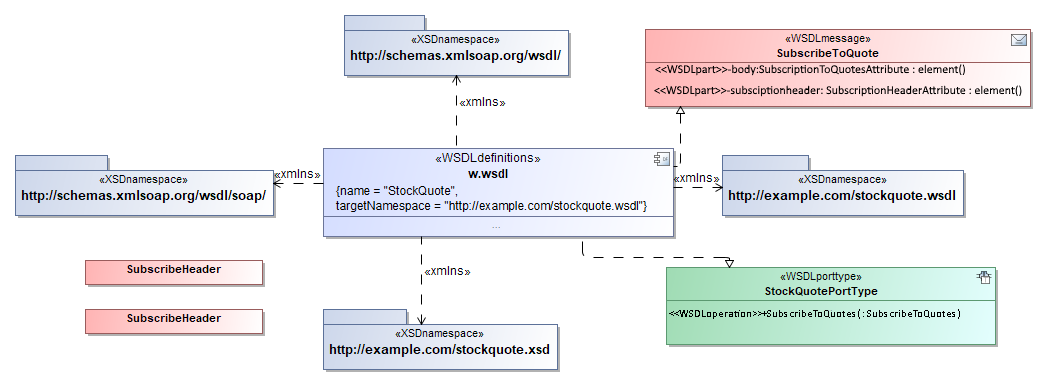Code:
<definitions name="StockQuote" targetNamespace="http://example.com/stockquote.wsdl" xmlns:tns="http://example.com/stockquote.wsdl" xmlns:xsd1="http://example.com/stockquote.xsd" xmlns:soap="http://schemas.xmlsoap.org/wsdl/soap/" xmlns="http://schemas.xmlsoap.org/wsdl/"> <message name="SubscribeToQuotes"> <part name="body" element="xsd1:SubscribeToQuotes"/> <part name="subscribeheader" element="xsd1:SubscriptionHeader"/> </message> <portType name="StockQuotePortType"> <operation name="SubscribeToQuotes"> <input message="tns:SubscribeToQuotes"/> </operation> </portType> <binding name="StockQuoteSoap" type="tns:StockQuotePortType"> <soap:binding style="document" transport="http://example.com/smtp"/> <operation name="SubscribeToQuotes"> <input message="tns:SubscribeToQuotes"> <soap:body parts="body" use="literal"/> <soap:header message="tns:SubscribeToQuotes" part="subscribeheader" use="literal"/> </input> </operation> </binding> <service name="StockQuoteService"> <port name="StockQuotePort" binding="tns:StockQuoteSoap"> <soap:address location="mailto:subscribe@example.com"/> </port> </service> <types> <schema targetNamespace="http://example.com/stockquote.xsd" xmlns="http://www.w3.org/2000/10/XMLSchema"> <element name="SubscribeToQuotes"> <complexType> <all> <element name="tickerSymbol" type="string"/> </all> </complexType> </element> <element name="SubscriptionHeader" type="uriReference"/> </schema> </types> </definitions> |
Reversed UML model:
